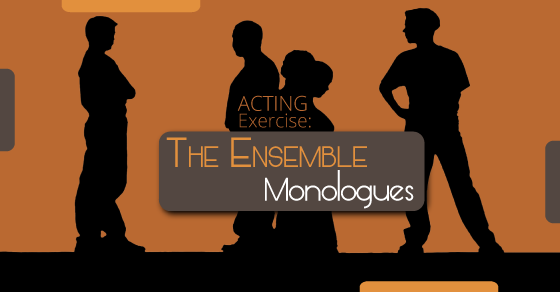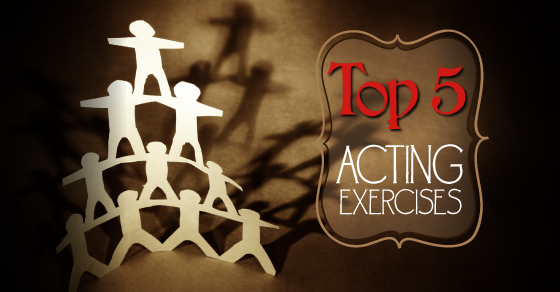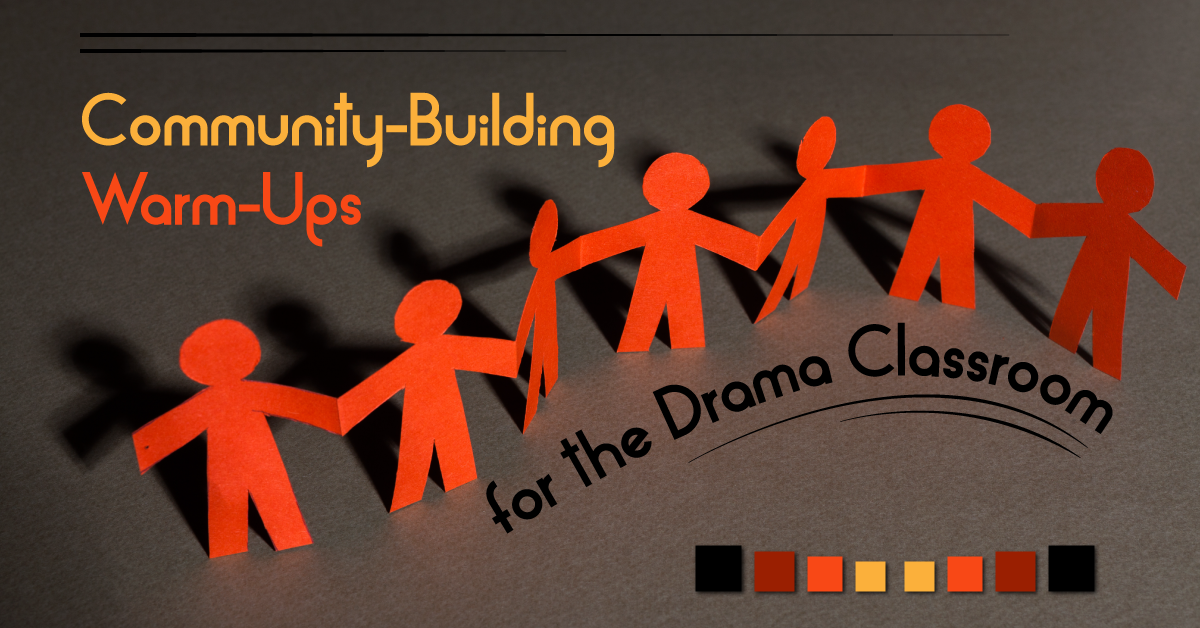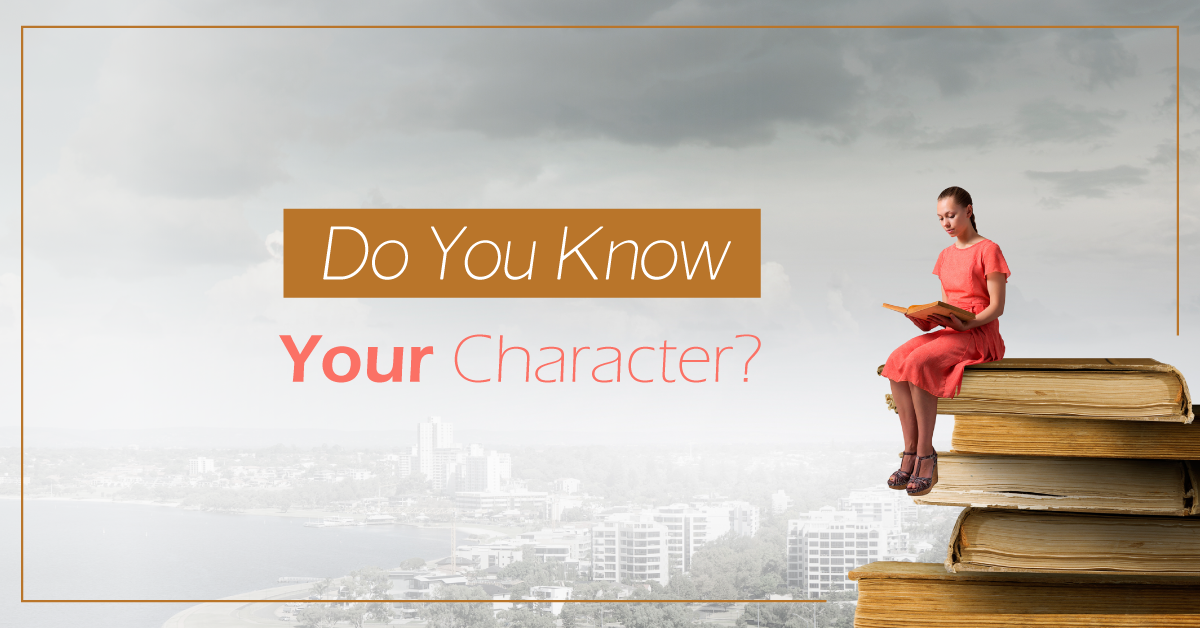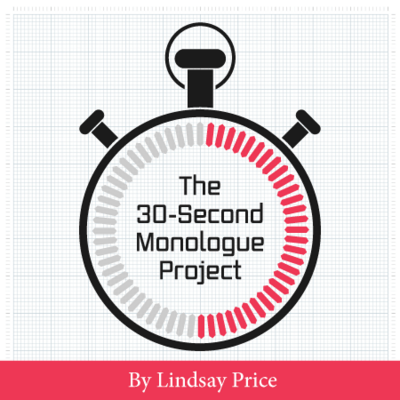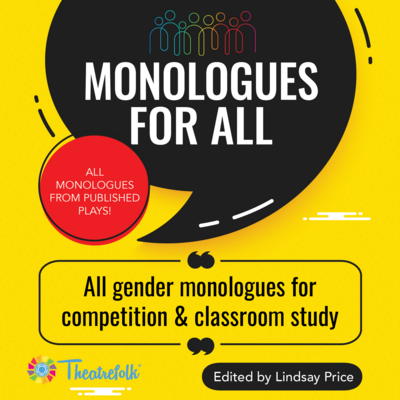Acting Exercise: The Ensemble Monologue
How do you take a monologue (meant for one person to deliver) and act it out as a group? How do you create an Ensemble Monologue?
Analyze the Monologue
Here’s a monologue from my play Funhouse.
GIRL: You’re not good at this you know. I’ve had better. Much better. Sneakier. Sit beside me at lunch, pretend to be my friend. Bolder. They try to drag me into the bathroom. Meaner. Spit at me. Knock books out of my arms. Pinch me. Treat me like a piece of garbage, think it’s funny to try and make me eat garbage, be garbage, and I should be so grateful for any attention that comes my way – oh sure let’s go in the dark ride, gee what a great idea! Oh look who’s waiting for me with what, rotten eggs to rub in my hair? What a surprise! How funny! (as others) Why aren’t you laughing? It’s just a little egg. It’s just a joke. (mocking serious) But I thought you were serious. I thought we were all going to be best friends. (dead serious) I won’t eat garbage for you, friend.
So the first task is to analyze the monologue.
- What’s the subject?
- What do we know about the subject?
- Who is talking, and who are they talking to?
- Why are they talking?
- Where does the monologue take place?
- What images are in the monologue?
If you’re doing this exercise with a class, divide them up into groups and have them answer these questions.
At first read, it’s easy to see that the topic of the monologue is bullying. The Girl in the monologue is talking to another person, probably a girl. She also takes on the voices of other bullies. The Girl is standing up to one of her bullies. We don’t know where the Girl is, but she does talk about going “in the dark ride” which suggests a carnival or sideshow. The big image for the piece is garbage. Being treated like garbage, being forced to act like garbage – the suggestion is that if you’re garbage, you’re less than human. The Girl is standing up for herself and declaring herself human.
Already there’s a lot to work with here. What seems daunting at first (how do I act out a monologue with a group??) becomes clear through question and answer.
Visualize the Subject
The subject here is bullying. Discuss the different types of bullying with students. Then visualize the subject: what are the pictures, scenes, and tableaux that visualize this subject? Have students create ten second scenes that illustrate bullying. Have students create tableaux in small groups. Create one huge tableaux.
Be Literal
There is a story here in the monologue. You could literally stage it – one girl delivers the monologue to another, possibly a group of girls with others as bystanders. How do those listening to the Girl react? Are they proud? Are they scornful? Are they bullied themselves?
Be Abstract
Don’t be afraid of the abstract! There is a very strong image of garbage in this monologue. To be bullied is to feel like garbage. Why not explore this in your scene? Brainstorm with your students how to use the image of garbage in your piece.
For example: What if everyone was dressed up as garbage, acting very non-human (perhaps zombie-like) at the beginning of the monologue? As the monologue progresses, this garbage takes on more and more human characteristics, until they too stand tall and proud with the girl at the end.
Vocal Options
Just because the piece is a monologue doesn’t mean only one person gets to speak. What if the entire group delivered the monologue? Decide which lines are spoken in unison and which by individual speakers. You can create a lot of impact by how you deliver the lines as well: a shout, a whisper, a plead, a punch.
Note: If you choose to deliver the monologue as a group, don’t just present the whole piece in choral formation. Think about the visual impact of your work as well the aural impact.
This exercise is an excellent example of Project Based Learning. It takes theatre in one form and teaches students how to apply it to another form. It teaches students to visualize words, a very important skill for staging theatre.
Related Articles
The 30-Second Monologue Project
by Lindsay Price
Give students the confidence, skills and tools they need to master the monologue with The 30-Second Monologue Project. This four-lesson unit guides students from the first moment to a successful performance.
Monologues for All
by Lindsay Price
Many monologue books have monologues with only male- or female-identified characters. This resource allows students to infer the identity of the character.
